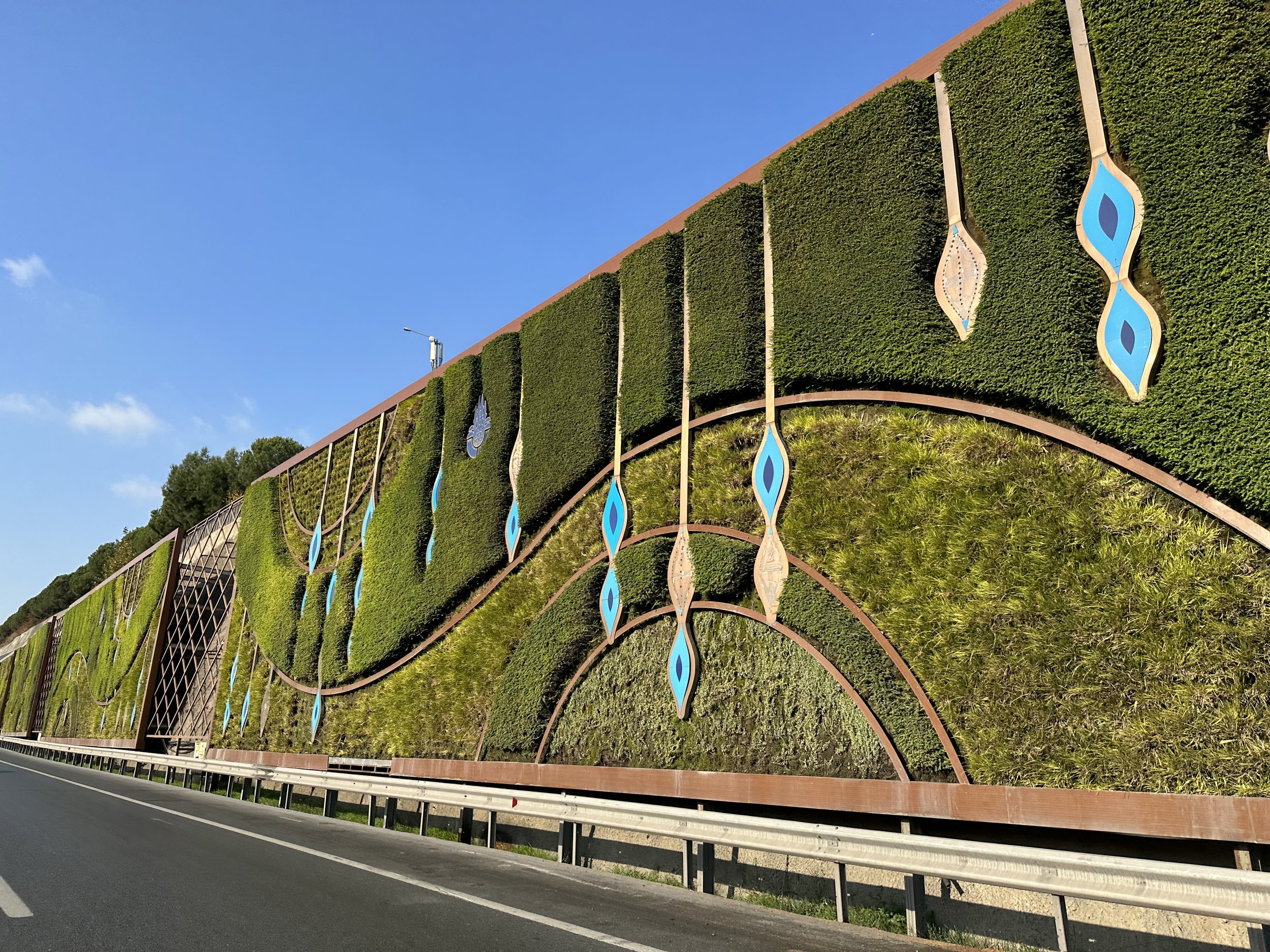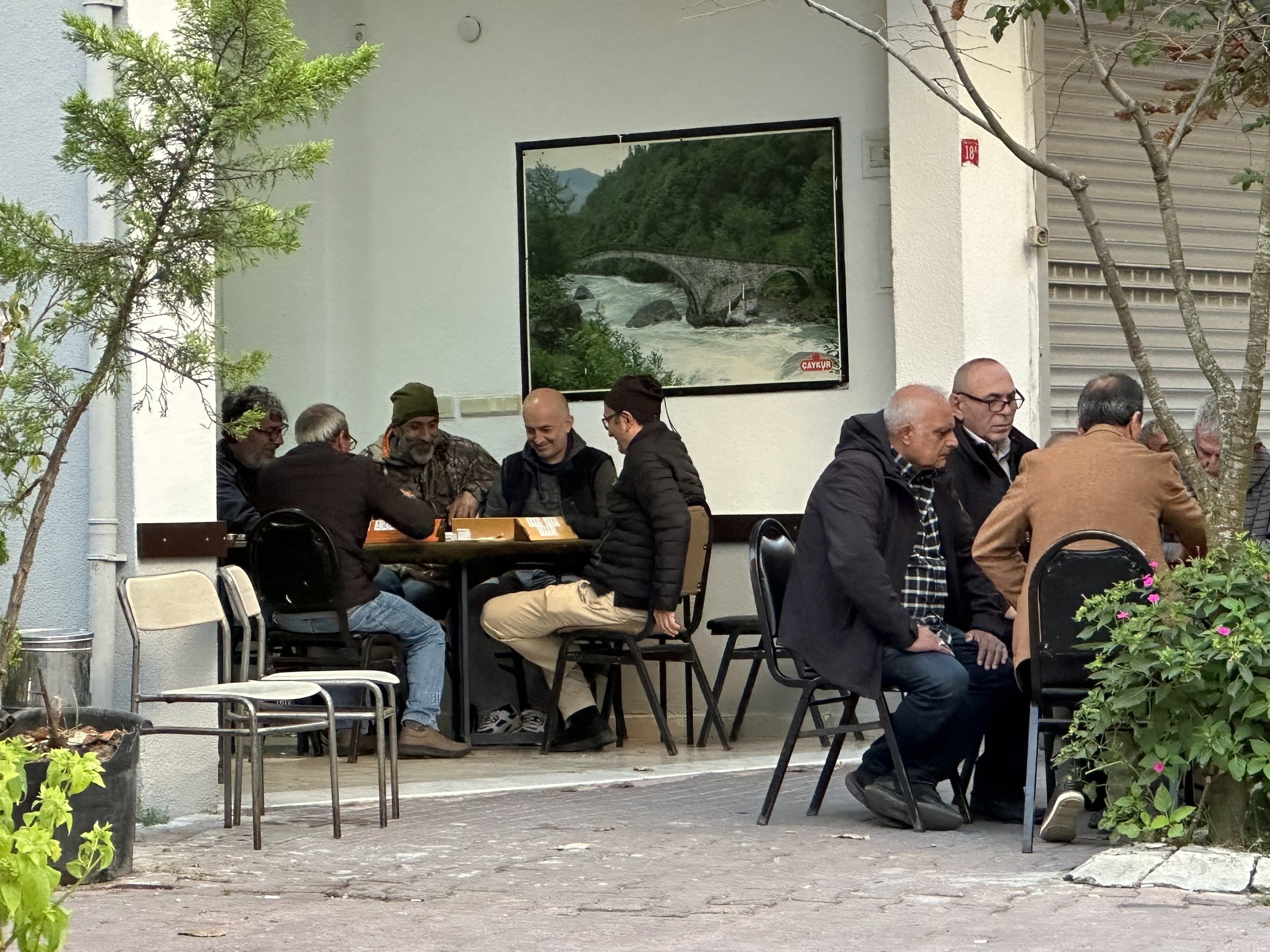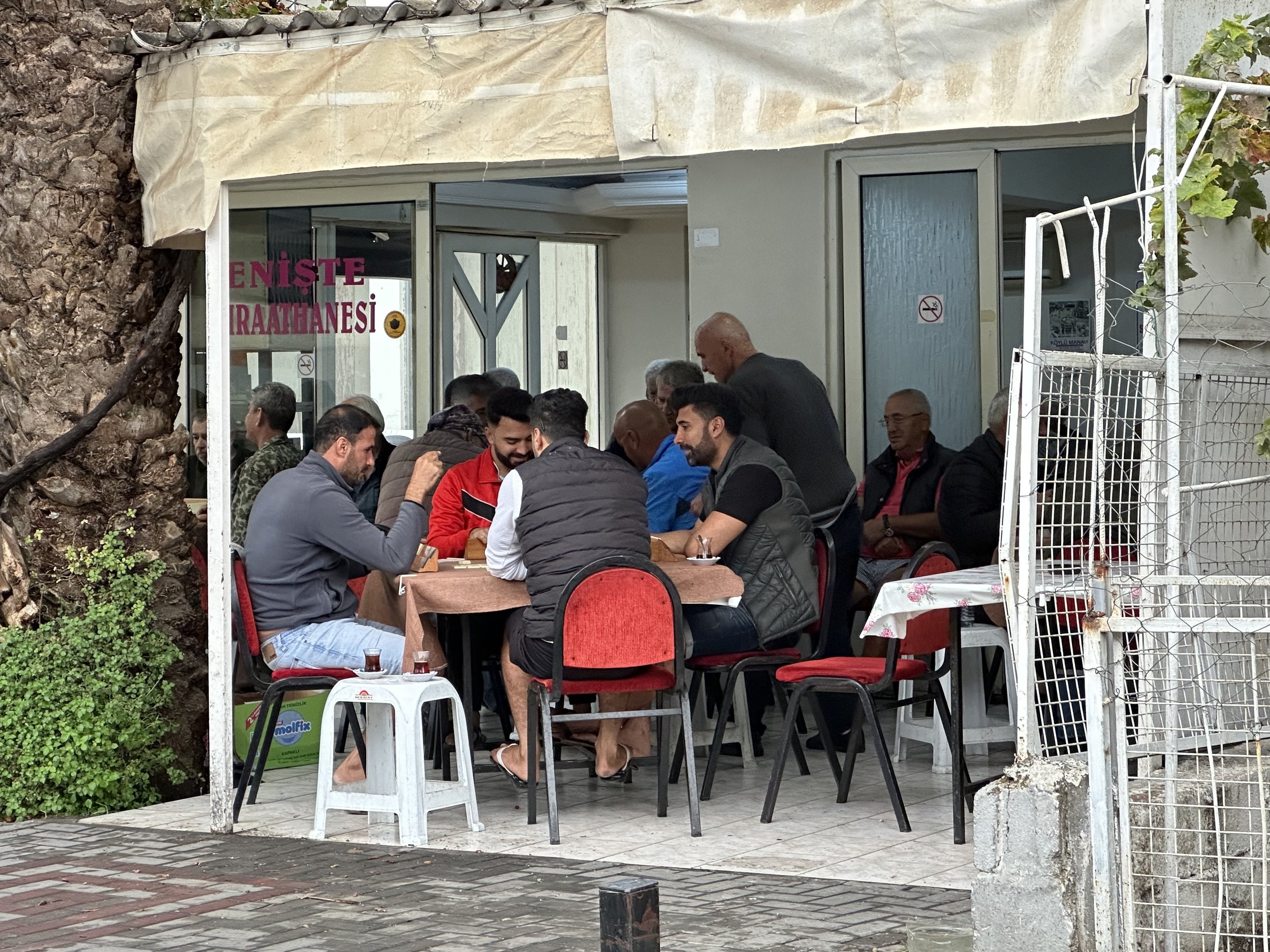Crossing the Bosphorus
We had one last week in Turkey before flying to the US for a month to visit friends and family and share in our annual Thanksgiving celebration. SO exciting! But first we had a tremendous amount of boat shopping, organizing, and packing to do - so we spent our last week in Istanbul.
The most populous city in Europe, Istanbul’s population has more than 17 million people (let that sink in!) making it one of the largest cities in the world. It is also the only city in the world which is in both Europe and Asia. Straddling the Bosphorus Strait, it is situated on two continents.
Vessels anchored in the Black Sea at the north end of the Bosphorus.
The Bosphorus is a very busy waterway with many ships and oil tankers passing through it from the Black Sea to the Sea of Marmara. It is 19 miles (30 km) long and is very sinuous, often narrow, and has fairly strong and complex currents. In its center a rapid current flows from the Black Sea to the Sea of Marmara, but a countercurrent below the surface carries water of greater salinity from the Sea of Marmara to the Black Sea. The Bosphorus is heavily fished, since the channel is a seasonal migration route for fish to and from the Black Sea. Both shores are densely forested and are dotted with villages, resorts, and fancy residences and villas.
There are many dozens of touring and cruising yachts, in addition to fishing boats, and then there are the ferries. There are four main ferry docks on the European side and two on the Asian side, 22 public ferry lines and 48 piers along the Bosphorus.
The boat traffic is teeming and I was grateful that the dozen or so times we crossed from Europe to Asia and back again, we crossed on land and not in our own boat! There are four bridges across the strait and we quickly discovered the least congested and most beautiful route to and from where we were staying. With 1,056 ft (322 m) high pillars, the bridge is one of the tallest in the world. It is also one of the world's widest suspension bridges, at 192 ft (58.4 meters) wide with 8 lanes for motor vehicles and two lanes for trains.
We stayed in the northwest corner of Istanbul (European side) our last week in a small community surrounded by dense forest. Directly across the street from our flat was a large arboretum which covers an area of 730 acres. We figured we would welcome a rural neighborhood after navigating the crazy city traffic every day. And surprisingly, that flat in Istanbul turned out to be THE most rural place we stayed while in Turkey!
Our first stop was IKEA where we purchased galley items: flatware, baking pans, cooking utensils and knives. Nothing like shopping in a Swedish store in Turkey. We then shopped for all the additional boat supplies: hardware, hull cleaning supplies, extra lines, etc. And, of course, we again visited Bauhaus.
We did a bit better this time, now that we’re familiar with the layout of the store, and saved on what likely would have cost 3-4 times as much in the US. It is also worth noting that there is a 2000 Turkish Lira ($107.60) limit on credit card purchases there. It took sometime for us to comprehend what was being explained to us through rather emphatic hand gestures. Ultimately we figured out the deal and we sorted our items accordingly. We ended up splitting our purchases into four different transactions.
We also discovered that wherever you shop, some prices are listed in Turkish Lira (TL), some in Euros and some in US Dollars. I found this constant shifting back and forth quite challenging when we first arrived in Turkey but I must say my mental math skills, like any muscle, having gotten stronger and more efficient with use.
Each time we crossed the Bosphorus brought a new discovery. First, most all of the highways in and around the city are artfully landscaped and meticulously maintained. The designs vary by region, each one representing a Turkish landmark.








Another astonishing thing that cannot go unnoticed is the size and number of Turkish flags everywhere. They can be 30-40ft long, masking windows on several stories.









And finally, while touring many of the communities throughout Turkey, including in Istanbul, we saw what appeared to be men-only game rooms. While it’s not forbidden for women to enter — they are not really welcome. The venues are small, with men drinking tea from small tulip shaped glasses and playing what I mistook for Rummikub. The game is called Okey and is played with the same set of boards and tiles but has different rules. The tea is strong and black and the play is focused, quiet and serious. I desperately wanted to make conversation and would have loved to join in but I was too inhibited to approach.



On our final trip across our favorite Bosphorus bridge Tom suggested we detour to the Black Sea (a sea I’ve wanted to explore for decades). I welcomed the idea and rerouted us northward. It was too cold (even for me) to swim but I suffered the temperatures momentarily.
Tom called this my ‘Disappointment Dance’
It was a welcome detour on our final transit across the Bosphorus - 12 times in total, on three of the four bridges.



